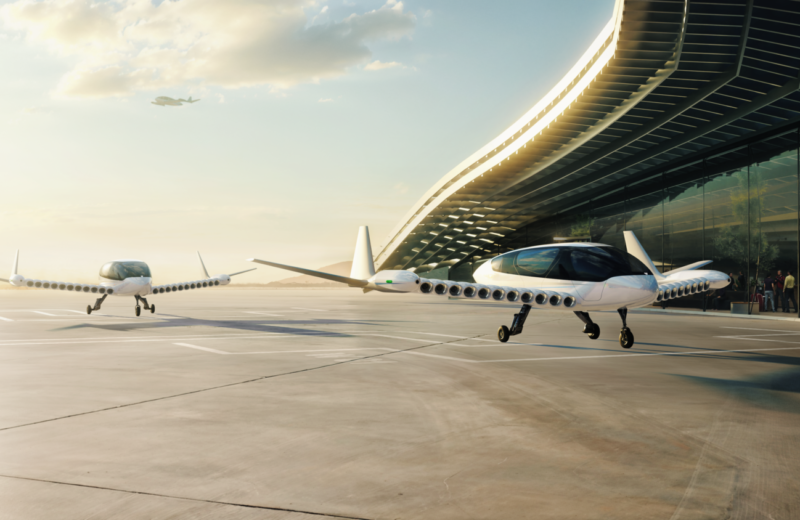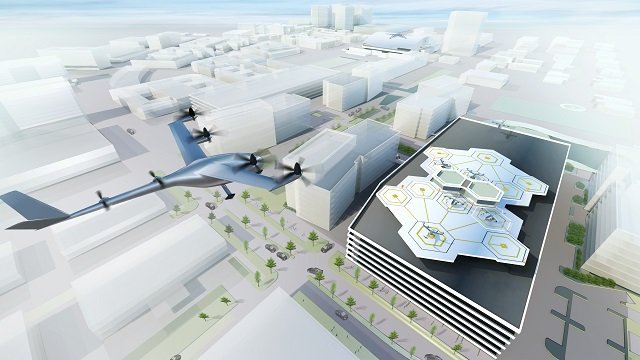Mark Moore had a long career at NASA, followed by his leadership of Uber Elevate, the car-sharing service’s attempt to emulate their terrestrial cab competition in a more skyward realm. Moore left all that behind to form his own company, Whisper Aero, which recently unveiled its Whisper Jet electric ducted fan propulsor. “Whisper” is more than just a trade name here. Moore and his team have created an electric ducted fan propulsion system that seems to be far quieter than anything else flying. Whisper Aero plans to supply these systems to airframe manufacturers, but not to produce any aircraft itself. What’s All the Noise About? Moore works from the standpoint that reducing noise is paramount in gaining community acceptance of AAM (Advanced Air Mobility)* machines. If Mark is correct in his assessments, which seem borne out by recent tests, his ultra-quiet propulsors should be a big part of future urban and regional flight. One dictum of propeller design is that …
Uber Elevate Summit Announces Sky Taxis by 2020
A scad of news about electric aircraft hit the internet and newsstands last week. Even USA Today reported on the Uber Elevate Summit in Dallas, Texas – held with many of the participants in the 2017 Sustainable Aviation Symposium a few days before. Big news came from Uber’s announcement that it intends to offer electric VTOL (vertical takeoff and landing) air taxi service in Dallas and Dubai by 2020. Bigger news for SAS participants is that it is partnering with Pipistrel and Aurora Flight Sciences, both presenting at the San Francisco event. Jeff Holden, Uber’s chief product officer, said Bell Helicopters, Brazil’s Embraer, and Mooney Aircraft would also provide “concepts and technologies” for the near-term launch. According to Aviation Daily, “Aurora has already flown a quarter-scale model of its concept, using elements of the electric propulsion system flown in the subscale demonstrator for DARPA’s XV-24A LightningStrike high-speed VTOL aircraft.” Aurora’s concept for Uber is a two-seat eight-rotor (for vertical lift) …
EAS VIII: Making Small Airplanes Ride Smoothly
Dr. C. P. (Case) van Dam of the University of California at Davis provided some counter-intuitive pointers on making small airplanes ride more smoothly to participants at the eighth annual Electric Aircraft Symposium in late April. His solutions for ride quality enhancement in small airplanes are an essential ingredient in making electric Sky Taxis a plausible reality. Because at least initially many electric aircraft are constrained to long wing spans and light wing loadings, they are subject to “perturbations of significant magnitude to be unacceptable.” These disruptions of the intended altitude and direction of the aircraft can be more upsetting to passengers than to the aircraft itself, but van Dam had several suggestions to alleviate the vertical and lateral accelerations that passengers perceive as bumpy air. He had explained the possible need for a gust alleviation system in his 2008 Electric Aircraft Symposium talk, something he felt even then would be necessary, “In order for these vehicles to achieve acceptable …
Pipistrel Shares Three New Products and Springs a Surprise
Slovenia, a tiny country which can be seen in its entirety from a light airplane, makes an astonishing array of such vehicles at the Pipistrel factory, awarded a European Union prize as the epitome of green manufacturing facilities. The company uses solar energy to power its operation and reports the number of kilowatts flowing through its plant on its web site. Naturally, we’d expect an environmentally responsible firm to build environmentally responsible products, and Pipistrel is committed to going green. Dr. Gregor Veble, Head of Research in the Research and Development Department; and Tine Tomažič, researcher and designer, shared a multiplicity of new products and gave an all-too-brief glimpse of a surprising future project with participants at the seventh annual Electric Aircraft Symposium at Santa Rosa, California. With over 300 of their two-seat Sinus and Virus aircraft in service, and 50 Taurus G-2 recreational motor gliders surfing the high mountain waves, Pipistrel has a growing customer base, and seems to …
Seventh Annual Electric Aircraft Symposium Unveils New Technology
This year’s CAFE Foundation Electric Aircraft Symposium in Santa Rosa, California had surprises from several sources, including new aircraft, batteries, and materials that will help make the future a good place to be. Some technologies are maturing and some are about to spring forth in ways we won’t see coming. We’ll be looking at each presentation in detail in future postings, but know for certain that the electric aircraft movement is turning a corner as things become integrated in an ever-quicker progression. We will see significant announcements in the next few months. The Symposium included not only technology, but seriously looked at how neighborhoods and society in general can integrate these new technologies in a more responsible way than the current helter-skelter world which pulls us away from family and community. What point is there in having magical things and messy lives?


